Wiseco’s Garage Buddy Steel Valve Kits
With a little bit of work on your part, Wiseco Garage Buddy Steel Valve Kits can help your dirt toys deliver years of service. Read on for full details on these reliable and affordable valve replacement kits.

Today’s 4-strokes are engineered to be high-tech, but the parts come with a big price tag.
One of the basic truths of the imperfect world we live in is that the people who design machines are not the same people who have to maintain those machines. This often leads to situations where something that seemed like the way to go on the CAD screen turns out to be more difficult or more expensive to fix in the real world than it otherwise would be. Exotic materials and painstaking processes that are economical to implement when you’re mass-producing something turn out to be expensive to service in the field.
In this single-serving, throw-it-away-when-it-breaks world, there are some noble souls who take a stand and say that we should be able to service and maintain things ourselves instead of discarding them, bringing new life to machines that need a bit of a refresh. Such is the case with Wiseco’s Garage Buddy Steel Valve Kits for a variety of popular dirt bike and ATV applications.
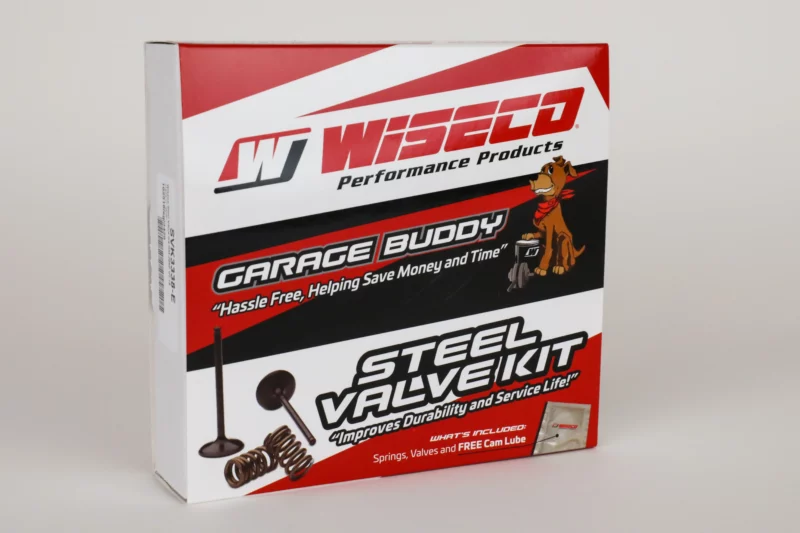
Wiseco Garage Buddy Steel Valve Kits were engineered to be a more reliable and affordable option for riders who need to replace valves in their modern four-stroke machines. Read on for complete details!
When faced with the price tag on factory replacement parts for bikes that came with trick valvetrain components, many owners cringe at the price of refurbishing a tired engine. However, with the right components at the right price, turning your dirt bike’s mid-life crisis around and letting it catch its second wind can be easy.
Win on Sunday, Sell on Monday
With the incredibly impressive machines under race tents worldwide, nobody wants to buy a new bike that has a whiff of “outdated technology surrounding it, so a lot of the high-end features that really only make a difference to the top one percent of professional racers become must-haves for weekend warriors who just want to trail ride with their kids. When those parts wear out, the exotic bragging rights come with a cost, though.
Titanium is a great valve material due to the strength-to-weight ratio, and also the material’s ability to deal with the high temperature of combustion, Wiseco Product Manager Dave Sulecki explains. The lightweight is important for engine acceleration; imagine how a heavy component takes more energy to move, and you can see where titanium is ideal when the camshaft needs to accelerate the valve quickly with less energy, and you can see that a lightweight component would be critical for a high-end racing engine.

Titanium is popular for valves for its light weight properties, but they are expensive to manufacture and can wear out faster than steel.
While those race-spec valves come standard because they are a positive selling point on the dealership floor, they are mostly there for bragging rights instead of making a difference you’ll feel when twisting the throttle yourself, and it’s cheaper for the manufacturer to make everything to one specification than it is to have separate designs. This light weight and performance comes at a greater cost, Sulecki adds. The material is more expensive, and costs more to machine or form into a valve. Additionally, the titanium requires a special coating to deal with the heat and wear, which also adds cost. This expense is needed for the highest performing engines, like the type you find in nearly all levels of racing from motocross up to Formula.
Sticker Shock
Even expensive, exotic materials wear out, though, and when it’s time to freshen up the valvetrain of your bike, you might be surprised to see just how much it will cost to replace like-for-like with factory components. Per Sulecki, “Steel valves are a great low cost alternative to titanium, and offer longevity, reliability, and improved wear over titanium. Some customers are not always racing their vehicles, and just want longer service intervals and the peace of mind that comes with this material.

“Steel valves are a great low cost alternative to titanium, and offer longevity, reliability, and improved wear over titanium.” – Dave Sulecki, Wiseco Powersports Product Manager
That is where Wiseco’s Garage Buddy Steel Valve Kits enter the picture. They are designed to be an affordable way to refresh your high-tech dirt bike’s valvetrain. Although they may not be made from titanium, that doesn’t mean they aren’t precision-engineered. Because steel valves are a small percentage heavier than titanium valves, heavier-rate valve springs are required to control the valve and protect the engine from valve float (the condition where the heavier valve will stay open under high RPM engine speeds), Sulecki explains. These springs are included with the Garage Buddy Steel Valve Kits.
Garage Buddy Steel Valve Kits are available separately for both intake and exhaust valves. They come complete with the valves, springs, and even a free packet of cam lube to make sure every box is checked during your reassembly.
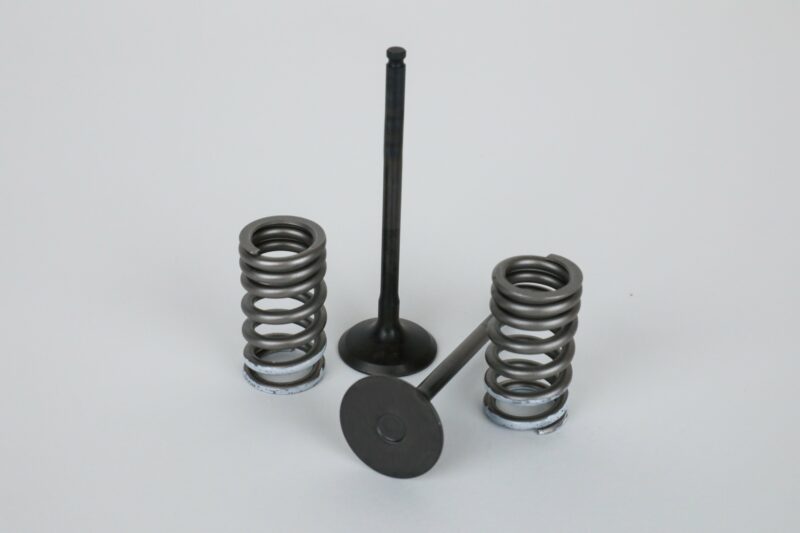
Converting to steel valves requires using valve springs designed for the specific weight of the valve. Springs are included with Garage Buddy Steel Valve Kits.
Wiseco’s extensive experience with powersports valvetrain components provides confidence that their conversion kits are engineered to restore showroom-floor performance, and they utilize stock retainers, seals, shims, and other components for affordability and drop-in compatibility. The springs are crafted from premium chrome vanadium steel, and the nitrided steel valves can actually outlast an OEM titanium valve by a factor of three or more.
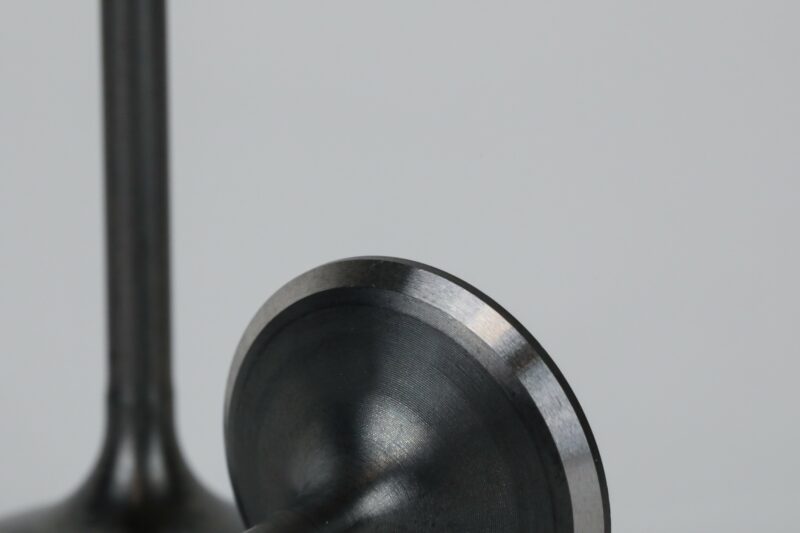
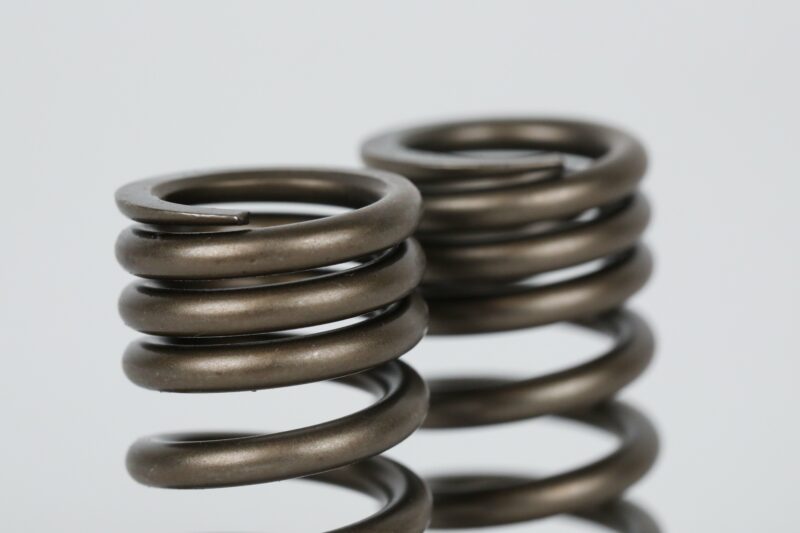
Wiseco’s nitrided steel valves are designed to utilize stock retainers, keepers, and seals. The steel conversion valve springs are manufactured from chrome vanadium steel.
Time For A Change
So, how do you know when it is time to replace the stock components, short of a dropped valve or broken spring? Per Sulecki, “Valves and valve springs wear over time, like any highly-stressed engine component. When you are checking the valve clearance, or making shim adjustments, this is always a good indicator how quickly the valves are wearing or receding into the seat. Keeping an eye on these telltales during your regular maintenance will allow you to judge when your factory valves and springs are reaching the end of their service life.
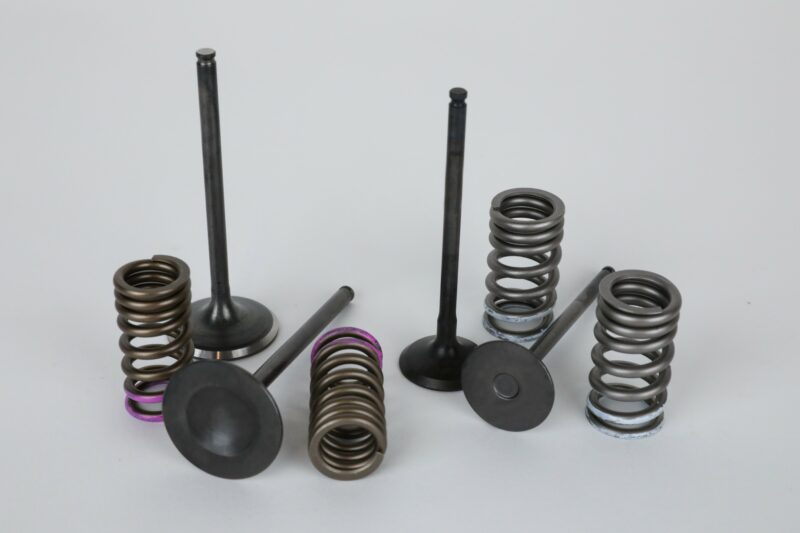
Entire engine in need of a refresh? Garage Buddy also offers Complete Engine Rebuild Kits, check them out here.
When you are inspecting your top end for general overall health, such as the piston and ring condition, this is the best time to take a closer look at the valves and valve springs, he continues. Valves and springs need to be removed from the cylinder head for full inspection. Once these are removed, you can look closely at the condition of the valve face where it seals to the valve seat, and also the condition of the valve head overall and the stem condition. Any cupping or damage to the valve face means it is time to replace the valve, and any similar wear to the valve seat means replacement or re-cutting will be needed.
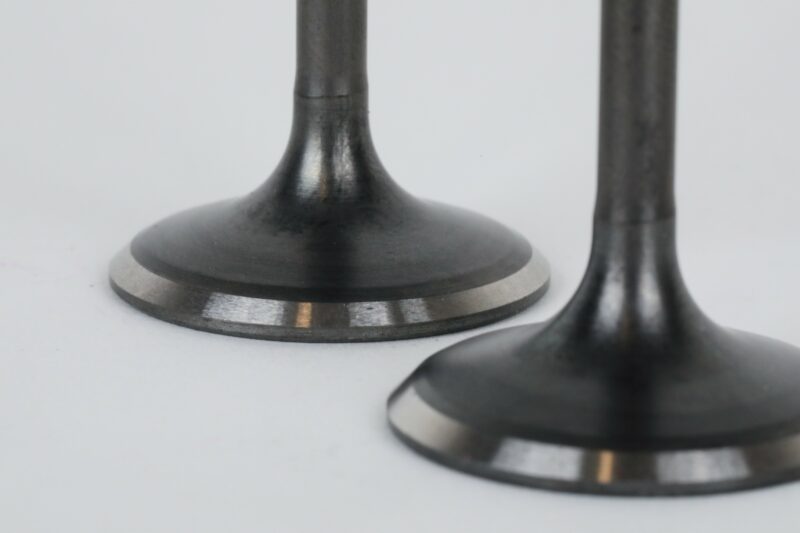

Inspecting your valves for wear while doing a top end is a good idea. Closely inspect the sealing surface of the valve for cupping, and inspect the rest of the valve for wear or damage. It’s a good idea to also check the groove at the top of the stem for signs of wear to avoid breakage.
Over time, springs become less elastic and may no longer be able to control valve motion at high speeds, but it is not the sort of wear that is immediately obvious to the naked eye. Sulecki suggests Valve springs should be inspected for free length, and also overall condition, looking for any wear marks or defects that can lead to spring failure. Any nicks or cracks are a sure sign of impending doom, and your cue to replace the entire set.

Valve spring free length can be measured and compared to the recommended spec to get an idea of wear on the spring.
Doing the Job Right
Depending on your level of mechanical aptitude and how well-equipped your garage is, valve replacement might be a job you want to subcontract to a professional. For most all valve replacements, it is a good idea to work with a qualified builder if you are not sure about the condition of any of these components, Sulecki suggests. The work can be done in your own workshop, but there are some special tools required to remove the valves from the head, and having an experienced eye on these items is always the best approach if you are not sure what to look for. An OEM service manual is always the best place to start, they will provide information about any special tools, and guidelines of what to look for regarding valves, valve seats, and even valve guides, and their condition.

When replacing your valves, be sure to use proper tools and follow all procedures and specifications outlined in your owner’s manual. If you’re unsure about performing your own valve maintenance, we recommend taking your machine to a trustworthy and certified shop.
Whether tackling the job yourself or letting a pro handle your top-end maintenance, you’ll save time and money by seeing to all the wear-prone components at the same time. Sulecki adds, When replacing valves, it is a good idea to inspect the top end for any concerning issues or conditions. Inspect the valve seals, valve keepers and seats, shim buckets, the condition of the cylinder head (flatness and sealing condition), and cam chain condition. Needless to say, the time to service or replace these components is while everything is apart in the first place, and by using quality components like Wiseco’s Garage Buddy Steel Valve Kits, you’ll protect your investment for many off-road seasons to come.

Wiseco Garage Buddy Steel Valve Kits are available separately for both intake and exhaust valves.
